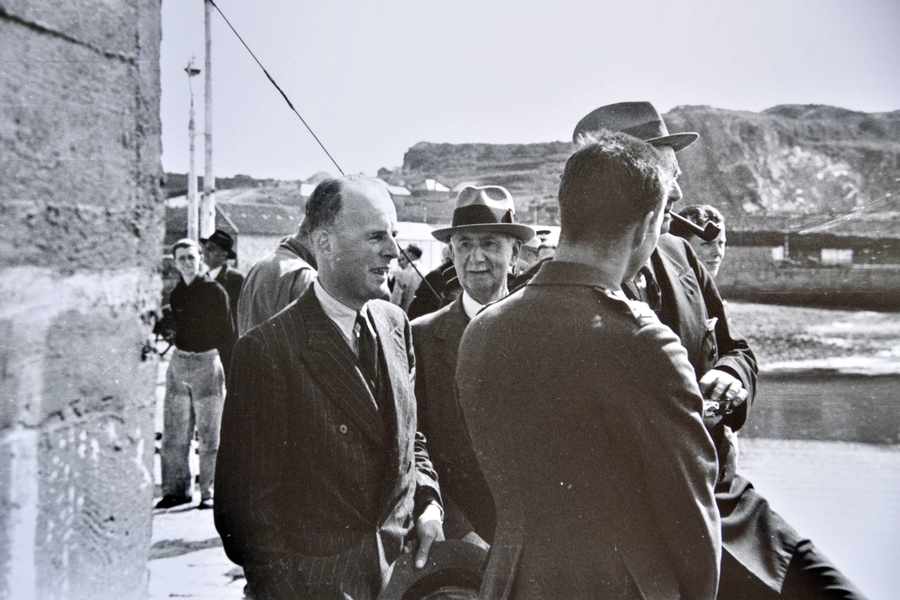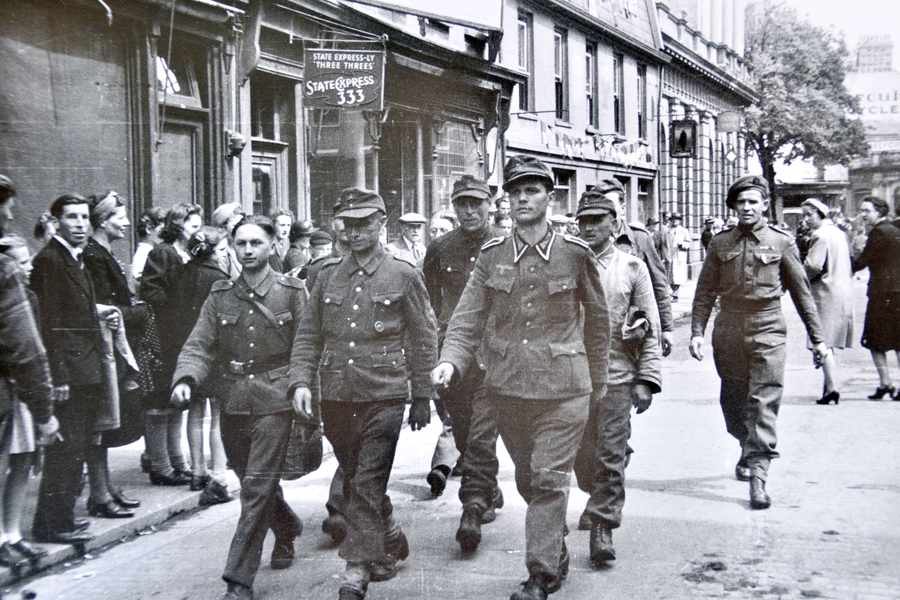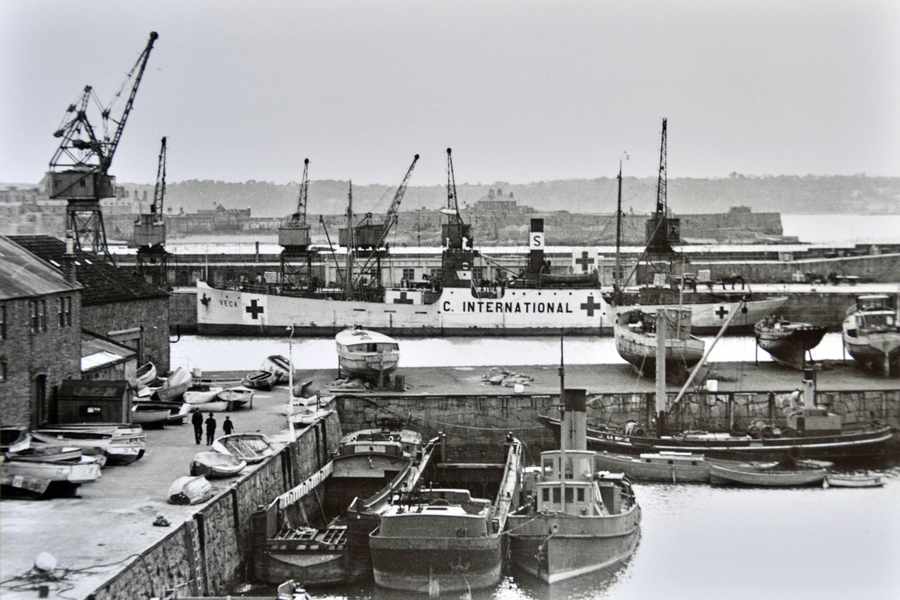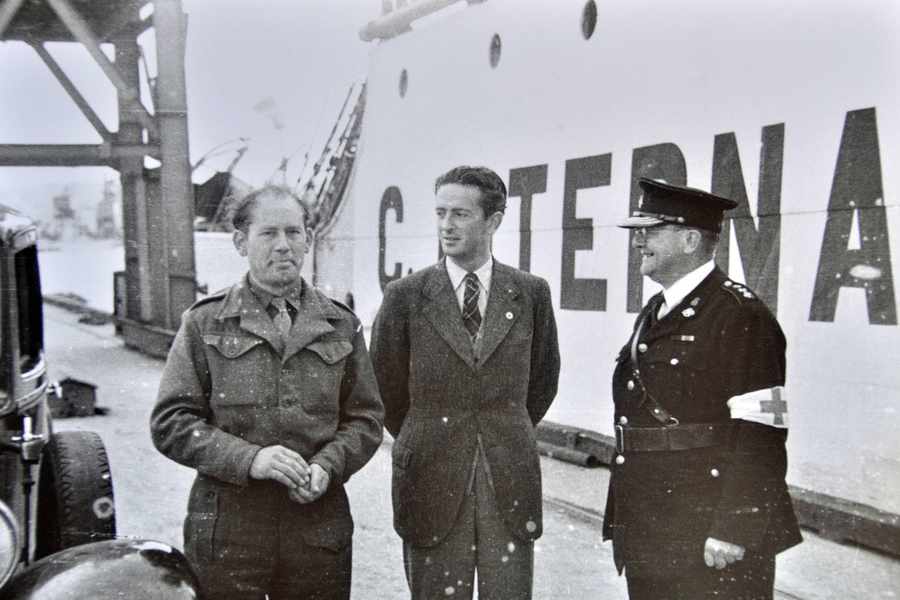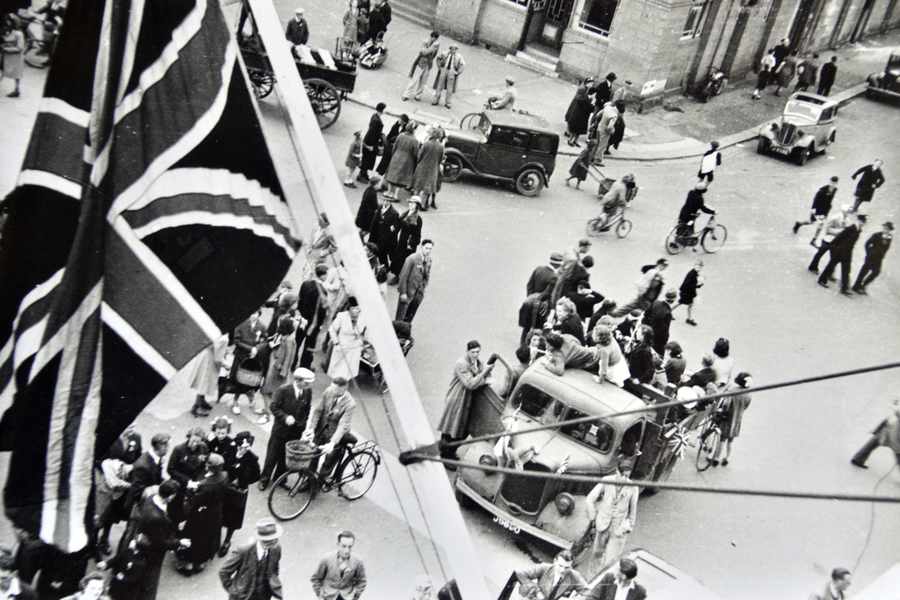- Photographs of Jersey’s Liberation are on display for the first time
- The pictures have been developed by Damien Horn, 70 years after they were taken
- They are on display at the Channel Islands Military Museum
- Gallery – See some of the pictures below
PHOTOGRAPHS that capture Islanders’ joy as five years of Occupation came to an end in 1945 are on display for the first time in a bunker museum in St Ouen’s Bay.
The images, depicting the events that unfolded on 8 May, when the Second World War ended in Europe, and the following day, when Jersey was liberated, have been developed by Damien Horn 70 years after they were taken.
Mr Horn’s lifetime collection of Occupation memorabilia is displayed at the Channel Islands Military Museum, close to Lewis Tower.
He said: ‘You can almost feel the release of emotion, as if the people have had a weight lifted off their shoulders – the photographs are so good.’
More than 800 photographs came in a cardboard box of Occupation items Mr Horn acquired 25 years ago, bringing his overall collection of Occupation photographs to more than 10,000.
As well as 30 airtight tins containing rolls of negative film, there was a German helmet and a gas mask.
The pictures include scenes at the Harbour of pilots going out to the SS Vega on 8 May, and in the Royal Square, where Islanders gathered to hear Prime Minister Winston’s Churchill’s speech broadcast by the BBC at 3 pm on that day.
But the most significant photographs were taken from early in the morning of Liberation Day, showing crowds gathering outside the Pomme d’Or Hotel and in Conway Street.
‘It is a fantastic collection in its own right, but this is the first time I have come across such a vast amount of photographs which are so special,’ Mr Horn said.
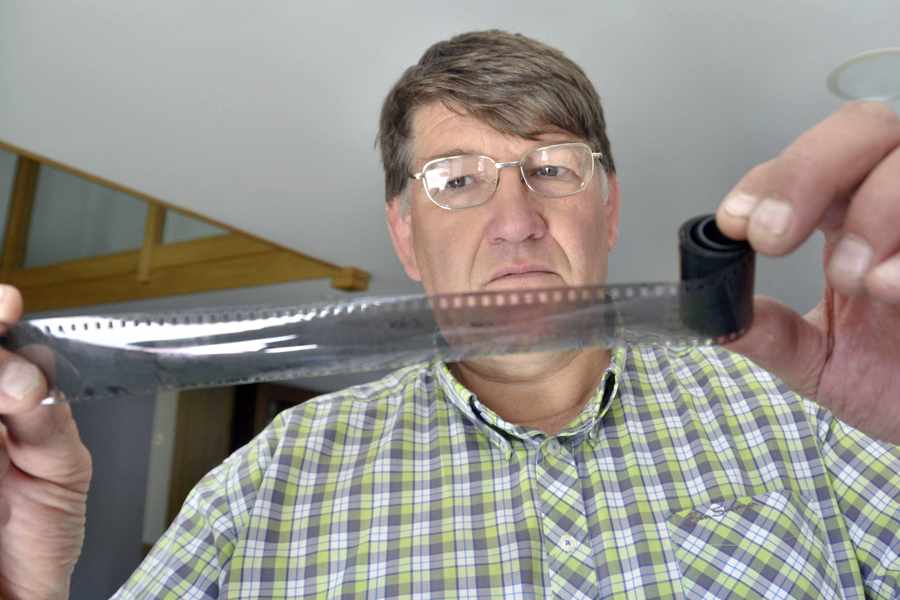
The photographs move on in sequence over the weeks following the Liberation to events including the Royal Salute in the Royal Square, the Victory Parade along Victoria Avenue and a football match at the FB Fields between Jersey and British soldiers,
Mr Horn said he was amazed by the quality of the photographs, considering how long the negative rolls had been kept in storage.
He suspects that whoever took them would have saved reels of film for the day Jersey was liberated, as photographic film was not on sale during the Occupation, so the film would have been at least five years old by the time it was used. I think someone put the film aside ready for the day the Island would be liberated, so now we have this very important record of Liberation Day,’ said mr Horn. ‘Considering the age of the film, the quality of the photographs is outstanding, and that makes the events of 70 years ago come alive.’
The museum is open 10 am to 4 pm, six days a week.
- The collection of photographs also include many taken by the Germans during the Occupation
- These include a detailed photographic record of the funeral of Oberleutnant Zepernick, who was popular with the occupying forces
- He was killed while on leave, in an air raid on a train, but his body was brought back to the Island and he was buried with full military honours in the German cemetery at St Brelades Church
- The photographs now in Mr Horns collection show Zepernicks coffin, draped with the Nazi flag, being placed on a gun carriage near to what is now Liberation Square, and being drawn along Victoria Avenue, followed by an escort of marching soldiers through St Aubin and on to St Brelades Church.
- In the 1960s, the bodies of German soldiers buried here in the Occupation were exhumed and reinterred in a German military cemetery in France
